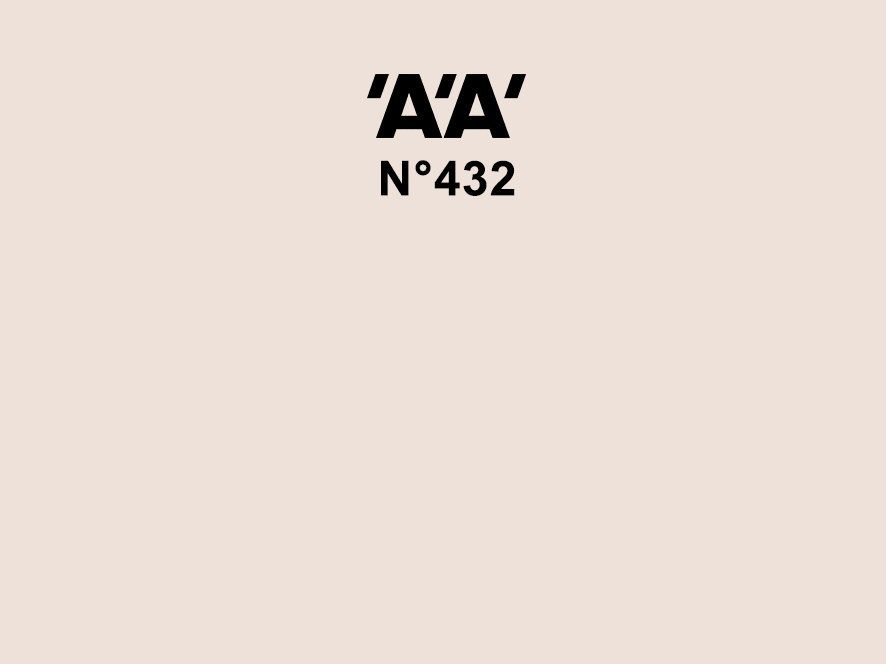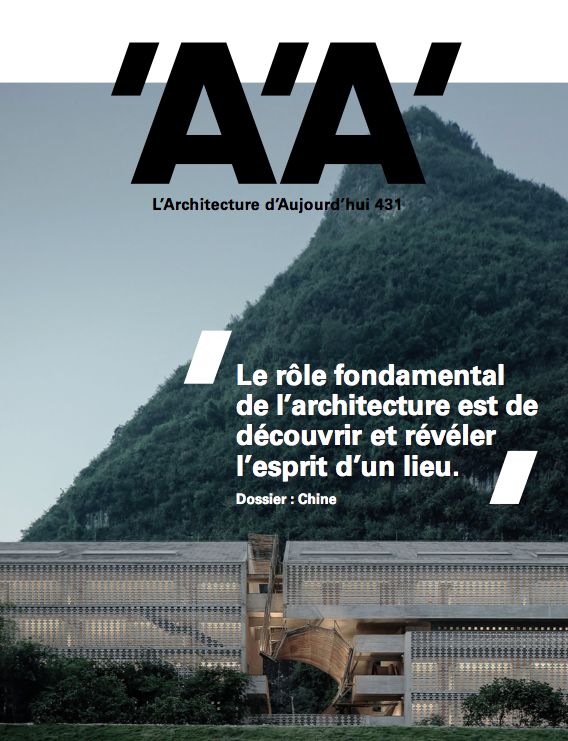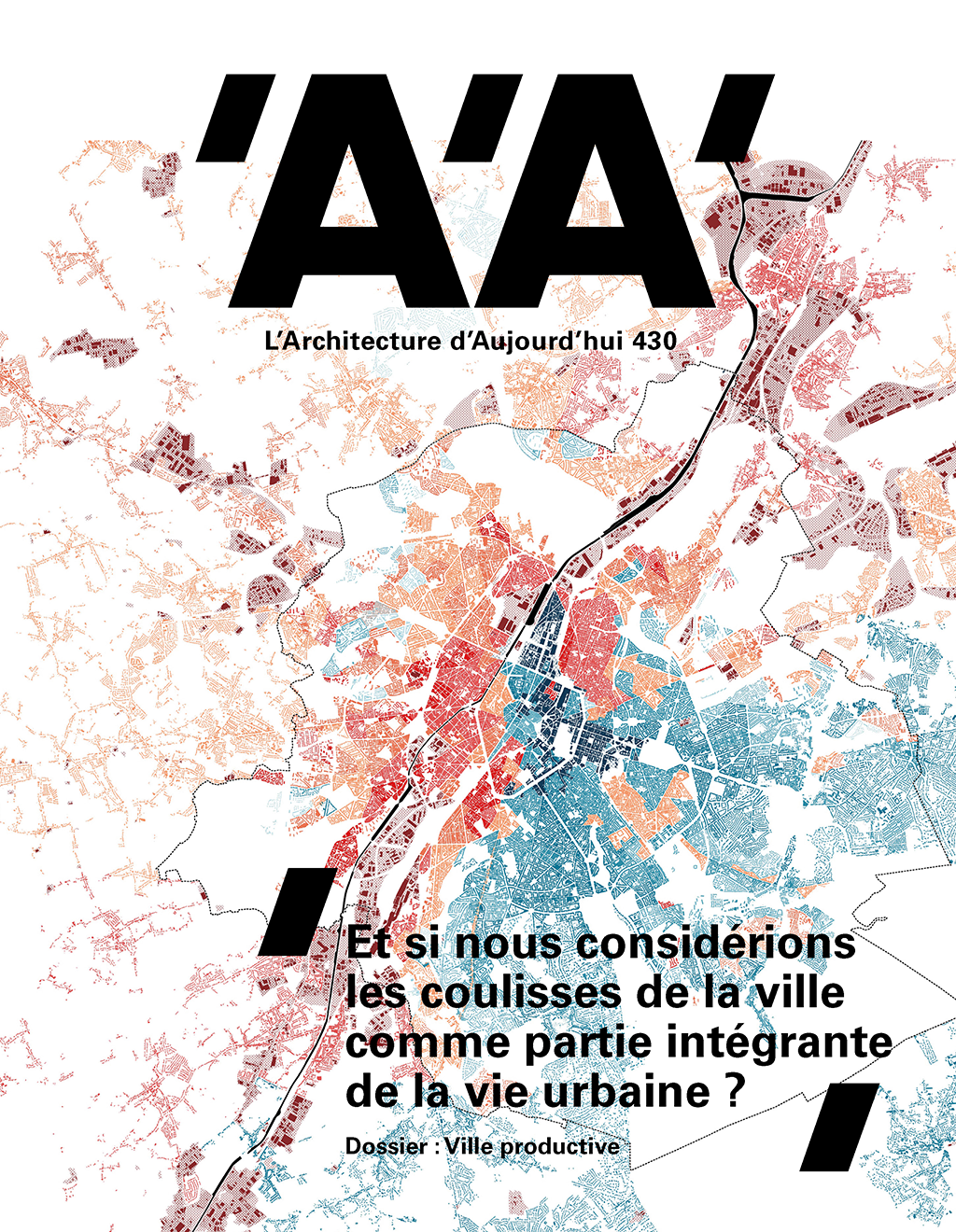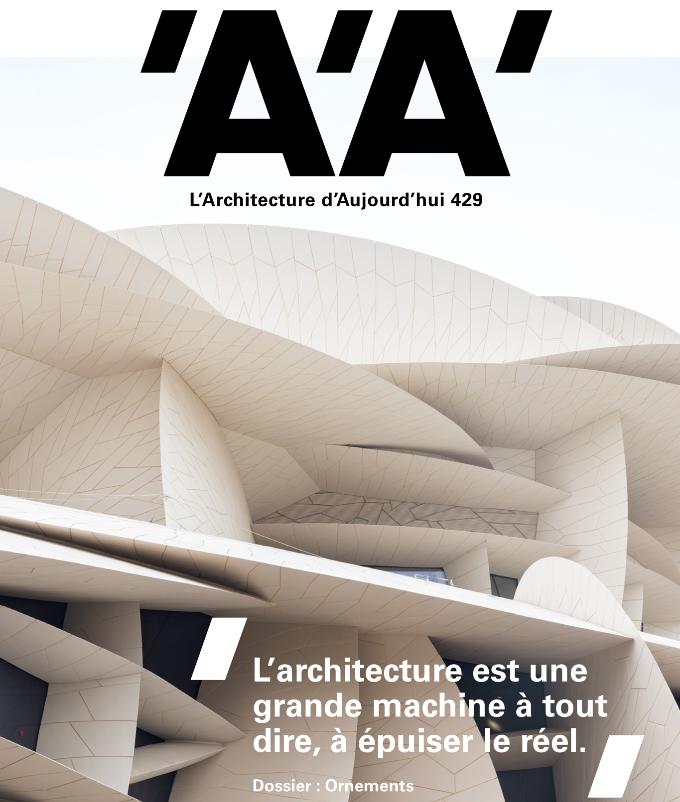Heritage and Innovation
For its September issue, AA has invited the architect Marc Barani to collaborate with the editorial team as guest editor in chief. “Updating a legacy while creating a framework for innovation: the subjects discussed in this issue illustrate these topics,” he writes in the introduction of the main dossier, entitled “Perspectives: Architecture’s public vocation, between heritage and innovation”.
He is an architect, but also qualified in scenography from the Villa Arson in 1990. A builder with the instincts of a researcher —an approach acquired on a voyage of discovery to Nepal in 1981. An aesthete, certainly, but also a committed activist. Designer and technician. Technician and poet. Contrasts flow to describe the work and preferred subjects of Marc Barani, who defines “the oxymoron as an essential figure of architecture”. He who ever since his first project, the Saint-Pancrace cemetery in Roquebrune‑Cap‑Martin, so loves to build “between heaven and earth”. In France, he is one of the few who do not reduce their ideas or architecture to binary extremes, nor to contemporary or past ideologies. An architecture whose “quiet intensity” (Saint-Pancrace, the Rafic Hariri memorial and Arles’ upcoming school of photography, to name but three), or “graphic intelligence” (Nice tramway terminus) one wants to highlight. For those who know Marc Barani, there is a leitmotiv that he repeats over and over, a saying brought back from Nepal and borrowed from Hindu tradition: “Architecture is the science of subtle connections”.
Is it this way of regarding his art that sharpens his sense of observation? If L’Architecture d’Aujourd’hui has chosen to invite Marc Barani to share his vision of architecture for its 432nd issue, it is primarily because he is an astute observer of the architectural scene and its many challenges. Entitled ‘Heritage and Innovation’, this issue of AA presents dialectic rather than oxymoron, positioning architecture as a challenge at the crossroads of the past and the future, of ancestral techniques and sometimes basic innovations. And above all, as a child of the glory days of public works, Marc Barani couldn’t fail to put the public vocation of architecture at the heart of this dialectic. “The latest technologies are sometimes powerless next to the ancestral dexterity of a stonecutter. My ideal future resides in the tension between these opposites,” he writes in this AA issue.
—
AA’s 432nd issue – Heritage and Innovation – is available on our online store.





